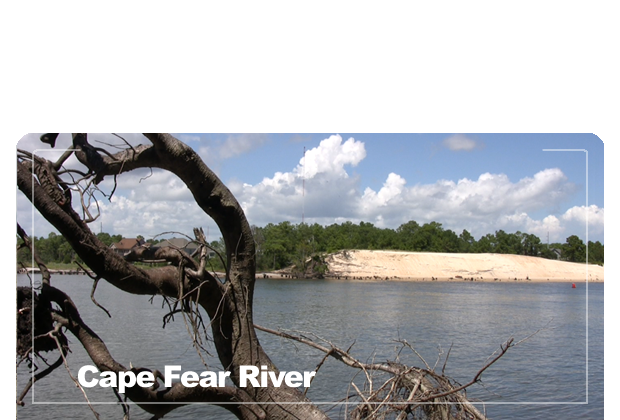What’s so special about The Cape Fear River?
The Cape Fear River is a major river located in the southeastern United States, running through the states of North Carolina and South Carolina. With a length of over 200 miles, the Cape Fear River is an important natural resource for the region and has played a significant role in the history and development of the area.
The Cape Fear River begins in the Appalachian Mountains of North Carolina, near the town of Wilkesboro. It flows southeast through the state, passing through the cities of Winston-Salem, Fayetteville, and Wilmington before emptying into the Atlantic Ocean at Cape Fear.
The Cape Fear River is named for the cape at the mouth of the river, which was named by early explorers who were wary of the treacherous shoals and currents at the mouth of the river. Despite its reputation, the Cape Fear River has long been an important transportation route for the region, serving as a major waterway for trade and commerce.
In the early days of European settlement, the Cape Fear River was an important resource for the local Native American tribes, who used the river for fishing, transportation, and trade. As European settlers arrived in the region, the river became an important transportation route for the growing population. The river was used to transport goods and people between the coast and the interior, and several small towns and communities developed along its banks.
The Cape Fear River has played a significant role in the history and development of North Carolina. In the early 19th century, the river was used to transport lumber and other resources from the interior of the state to the coast. Later, the river became an important transportation route for tobacco and other crops.
Today, the Cape Fear River remains an important resource for the region. It is used for transportation, recreation, and as a source of drinking water. The river is home to a variety of plant and animal life, and is an important habitat for a variety of fish species, including striped bass, catfish, and shad.
Despite its importance, the Cape Fear River has faced a number of challenges over the years. The river has been subject to pollution from industrial and agricultural runoff, and efforts have been made to clean up the river and improve water quality. In recent years, the river has also been affected by rising sea levels and flooding, which have caused significant damage to communities along the river’s banks.
Despite these challenges, the Cape Fear River remains an important resource for the region and a vital part of the state’s natural and cultural heritage. It is an important source of drinking water and a popular destination for recreational activities such as fishing, boating, and paddling. The Cape Fear River will continue to play a vital role in the future of the region, and efforts will continue to be made to protect and preserve this important natural resource.
I research and report on fishing, fishing gear/equipment, survival topics, and marketing for outdoors related businesses. I assist here on CB Fishing as the editor. Articles may contain AI researched content. All content is published for education and entertainment purposes only, NOT LIFE, HEALTH, SURVIVAL, FINANCIAL, BUSINESS, LEGAL OR ANY OTHER ADVICE. Learn more about Mark Mayo
- Guide to starting a Fishing Charter business
- Carolina Beach Local Fishing Reports #94RT
- Strategic Fishing Charter Marketing
- Carolina Beach Local Fishing Reports #83RT
- Carolina Beach Local Fishing Reports #73RT
- East Coast Got Em On King Mackerel Tournament 2023
- 2023 Recreational Flounder Season Announced
- Carolina Beach Local Fishing Reports #63RT
- Beginner’s Guide: Your First Fishing Trip in Carolina Beach
- Carolina Beach Fishing Reports #53RT
- King Mackerel Fishing in Carolina Beach, NC: A Comprehensive Guide
- Current Fishing Report and Trends and new “Big Red” Artwork
- Surf Fishing in Carolina Beach, North Carolina
- What Do Redfish Eat? A Comprehensive Guide
- Early Spring 2023 Carolina Beach Fishing Report
- My Top 10 fish to catch at Carolina Beach, NC!
- What are the Most Popular Fishing Spots in Wilmington, NC?
- How to surf fish for bull reds
- Flounder in the Cape Fear River
- Striped bass in the Cape Fear River
- Top 4 fish to target in Carolina Beach, NC
- East Coast Got Em On King Mackerel Tournament starts to wind down
- 2022 ranking results – East Coast Got Em On King Mackerel Tournament
- Flounder Season shortens for 2022


